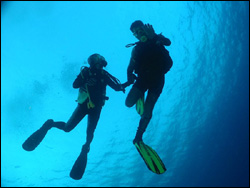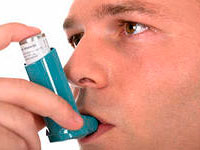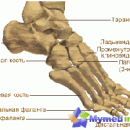It turns out that some patients with asthma can be diving. How to evaluate which patient can dive, and what - no?
Content
What is asthma?
Problems that asthma can create during immersion
Assessment of the suitability of a patient asthma for a diving
What is asthma?
Asthma – This is a disease affecting small and medium bronets. During an attack of asthma, the bronchi is a narrowing of the bronchi, which prevents the air passage in and, most importantly, from the alveoli, in which gas exchange is directly. Asthma attack can be caused by three reasons, among which the spasm of muscle fibers of the bronchi walls, swelling of the fabrics lining the inner surface of the bronchi, or blocking the bronchi of the bronchi by these tissues.
The attack is often an allergic reaction to any substance, such as pollen of plants, animal wool, home dust or other allergens. In some patients, the attack is caused by physical activity or the transition from breathing with warm air into cold breathing. It happens that the cause of choking is a viral infection. Potential incentives for the development of asthma attack a lot.
During the attack, the patient is suffering, due to the difficulty of air passage with breathing, wheezing, especially when exhaling. In terms of diving, it is important that in patients with asthma exhale causes a greater difficulty than inhale, that is, there is a tendency to delay air in the lungs. With serious forms of the disease, the narrowing of the bronchi can cause a significant difficulty of breathing and lead to death.
One of the most important aspects when discussing the possibilities of class diving during asthma is that the severity of this disease varies widely.
There is a large group of patients who are more suitable name «Former asthmatics». These are people who were sick as asthma in childhood and, like almost half of all asthmatic children, turned off the disease in a publity, and at the time of the examination they do not suffer from attacks and have not received special medicines for a long time. First, some «Former asthmatics» The diagnosis could be delivered wrong. Unfortunately, such a diagnosis as asthma is raised for life, especially in previous years, when a person was considered unsuitable for diving due to the child's diagnosis of asthma. You can also highlight a group of asthmatics, which have difficulty breathing only sometimes, usually in response to clearly identifiable stimuli, for example, cold. And finally, there is a group of patients who, whose suffaches of suffocation are quite often, and they constantly take medicine. The division into these three groups is very conditionally, and often a person can not clearly attribute to one of them. To assess the health status of each patient, it is necessary to approach individually, and my solid opinion is that the name of ASTMA includes many different pathological conditions.
With asthma disease, two main types of drugs are used. Medicines of the first type remove the symptoms of the disease when the attack has already developed. Their action is based on the relaxation of the walls of the bronchi, although some funds are directed to the removal of the tumor and stop the discharge of mucus. Second-type preparations serve to prevent attacks. They are taken constantly, even in the absence of any symptoms of the disease. These drugs dull allergic reactions to irritating substances and are often very effective in the case of proper reception. Recently, new drugs have appeared, based on the combination of both listed actions, and which allow us to remove the symptoms of an attack for a long time, thereby preventing the development of subsequent symptoms.
Problems that asthma can create during immersion.

There are three well-known aspects of asthma disease that may be contraindicated to dive. After reading this article, you will understand that at least some of them are speculative and flow rather from a fundamental attitude to the question than from the actual danger.
First, it is believed that patients with asthma are more likely to develop pathological diving. We all learned that the main rule of diving –always breathe evenly, never delaying breathing. If the diver performs an emerge on respiratory delay, the expanding air may damage the sensitive tissues of the lungs, as a result of which air bubbles can get directly into the blood and blood to the brain, causing the development of the arterial gas embolism (AGE). In astmatics, there is a danger that if the narrowing of the bronchi will occur during the dive, the expansion of the air in the closed space during the ascent can lead to the same problem. Another danger is that the reception before immersion of the drug Ventolin, relieving the attack of asthma, reduces the efficiency of nitrogen bubbles from venous blood. The remaining bubbles circulating in the blood can enter the artery, which theoretically can increase the likelihood of decompression disease.
Secondly, asthma attack significantly limits the ability of a person to effectively perform physical exertion, which can significantly reduce the safety of immersion. Indeed, it is difficult to object to the statement that difficulty breathing will prevent a person to get to the bot, hitting on the surface of the water.
Thirdly, asthma not only can potentially make it difficult to perform the immersion above the above reasons, but also the immersion itself can provoke the development of an attack due to physical load or breathing with cold dry air from the cylinder. In addition, it is known that the regulators often skip a certain amount of salt water, which can be an irritant for the respiratory tract and cause an attack in some patients.
The problem is that we do not know how much all these fears are really serious. No one has never investigated a greater sample of patients with asthma to trace their dives during perennial diving classes. There are some data from retrospective reviews that cannot be fully reliable. In these reviews, it is indicated that many of the patients with asthma (including the active form of the disease) are engaged in diving, and that although their relative risk, possibly increased, absolute risk remains at a rather low level. What i have under this in mind? For example, in one review it is indicated that the likelihood of the development of the arterial gas embolism in astmatics is twice as high as Nasatmatics. Sounds awful? But here it should be noted that the risk of developing AGE in neastmatics is 1 to 50000, and therefore astmatics – 1 to 25000. It is with this kind of difficulties that we face, deciding whether a person sick asthma can do diving. Risk can be elevated, but still small. In this regard, the question arises how great should be the risk to consider it unacceptable. Absolutely obvious, there is no unambiguous answer.
Assessment of the suitability of a patient asthma for a diving.
To avoid responsibility for their actions, when evaluating the suitability of a patient with asthma for diving, the doctor is easiest to say: «No, you can not be immersed!». This happens often, and the doctor here is nothing to reproach, although this approach is clearly not the best. Indeed, some potential divers after such a refusal will go to another doctor and Little, which is absolutely healthy. I and many my colleagues came across this and understand the situation perfectly. In addition, I as a person who received a lot of positive emotions from diving, I simply can't refuse to person, complete enthusiasm, in an objective analysis of his condition and risk to which he will subjected himself when immersing, and not give him the opportunity to accept a conscious decision based on the information received.
What i mean under the conscious decision? Under this it is understood that I am clearly and intelligibly explaining the candidate all the risks associated with diving, and give him the opportunity to make a decision on the basis of the information received. However, there are serious reservations. I never use this approach when evaluating those candidates, whose risk is too big. As for asthma, the majority of doctors agree with me that the disease is in more active form, the greater the risk carrying it when performing dives. Those people who have seizures of suffocation often cannot be considered suitable for diving even on the basis of a conscious decision, since their risk when performing dives is too high. The same as Asthma was sick in childhood, or not so serious the form of the disease, will expose themselves not much greater risk than other divers, and can be provided to them as adult people, the possibility of adopting a conscious decision.
In everyday life, we all have to make decisions, weighing a potential risk. Sitting behind the wheel, we all know that the more speed, the greater the risk and more serious consequences of the accident, but nevertheless many still exceed the speed. Why? Yes, because by analyzing the situation, a person understands that the pleasure of fast driving is currently more important for him than a potential risk. We make a conscious choice, sitting on a plane, playing rugby, riding a bicycle by road. The same applies to diving, just potential divers are much worse informed about the sport risks inherent in this type than many other potentially dangerous actions. And in this case, the doctor's role is to sufficiently inform the person who came to him, giving him the opportunity to make a conscious choice.
My approach to the appreciation of the suitability of a patient asthma for diving is the following. First, I carefully study the story of his illness. Those who I find asthma in an active form, I say that they can not be engaged in diving, and explain why. Next, the choice for them. In principle, they can go to another doctor and lie down, but at least they will know what they go. Please note, I try to convince them not to do this.
Those who have not yet experienced asthma attacks and has not accepted drugs for many years, usually can do diving without any additional surveys. But I always warn them that the former disease slightly increases the risk of their dives.
Most questions usually arise with those whose attacks happen once or twice a year during a cold, or in the spring, during flowering of certain plants. I usually explain to them all possible risks of dipping immersions, and if the desire to engage in diving they do not disappear after that, I spend an additional examination to make sure that neither exercise nor inhalation of salt water particles (at the same salt concentration, which In seawater) do not cause the narrowing of the bronchi. If this additional check does not reveal contraindications, and the person is completely confident in his desire to perform dives, I usually give him permission to diving. Unfortunately, conducting these checks and drawing up all documents requires time and money, but it is in any case better to simply say «it is forbidden», without going into details.
Translator A. Zubkov.
 There are three well-known aspects of asthma disease that may be contraindicated to dive. After reading this article, you will understand that at least some of them are speculative and flow rather from a fundamental attitude to the question than from the actual danger.
There are three well-known aspects of asthma disease that may be contraindicated to dive. After reading this article, you will understand that at least some of them are speculative and flow rather from a fundamental attitude to the question than from the actual danger.









